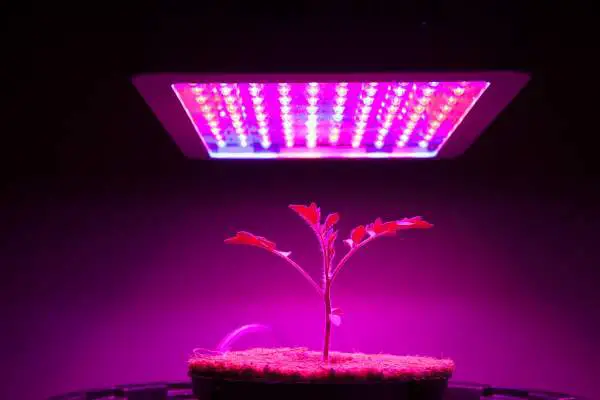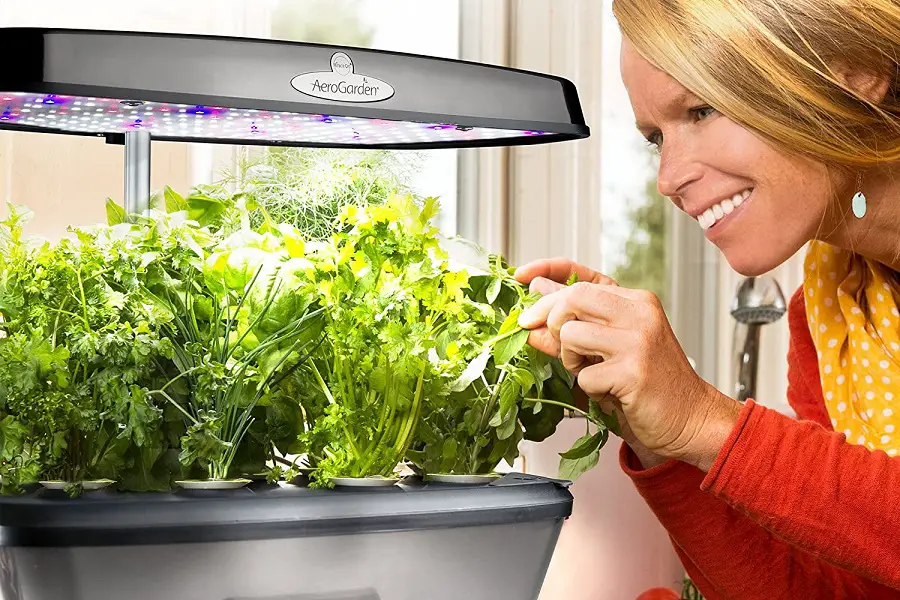Whether if you are just getting interested in growing with hydroponics or you are a veteran grower, you may be interested in trying LED lights for your system. LED lights are a more popular light source and are relatively affordable for the number of benefits that they offer.
There are plenty of different kinds of lighting for hydroponic systems, and each has its own unique benefits and downsides. The next “Big Thing” is LED grow lights, but how much of this are marketing and hype, and how much is it true about these lights.
To find the underlying cause of the question, we look at everything there is to know about LED lights and to see if they are the best choice, or they have a specific use, and there are better options available.
LED Lighting Advantages in Hydroponics
Before you look at this kind of light source as a good option for hydroponics, it is worth looking at this kind of lighting rig in comparison to other lighting fixtures. It is these after all that LED lights need to be better than.
Here are the main areas where LEDs have an advantage over fluorescent or incandescent bulbs.
- LED’s use less energy
- LED’s run much cooler
- LED bulbs are more durable because of their solid state
- LED lighting fixtures are smaller
- An LED lighting fixture can run longer
One final area where there is a difference between LEDs and other bulbs is the luminous efficiency. When you compare fluorescent and incandescent, LED delivers a much higher ability to produce visible light. This equates to a light, which is more efficient at producing more visible light per unit of power that is input.
One thing to note here is that just because there is more visible light doesn’t mean that it is better quality light.
Here are the full advantages of LED lights in more detail.
- Fast Harvest Cycling: You can use LED’s around the clock without affecting the temperature of your grow room. When growing indoors, your plants will grow by the conditions you dictate. You can change the light hours, the red light wavelength among other factors
- Energy Savings: LED’s consume around 60% less energy than a conventional lighting system to deliver the same light. Because of this, they are cool in operation. This has the effect of not warming your grow room where you require additional cooling.
- Adaptable Wavelengths: With LED’s you can regulate the light wavelengths. You can tailor these to your plants requirements so they can photosynthesize. LED’s deliver the precise spectrum of light plants require. LED’s also deliver a full spectrum of light, and you can turn off some wavelengths in some models.
- Extended Lifespan: An LED bulb can last as much as 50,000 hours, they last so long in fact, and it is often the control unit that stops working long before the bulbs. These can be easily changed if this does happen.
Disadvantages of LED Grow Lights in Hydroponics
It is unfortunate, a lighting system, which comes with so many advantages, has to come with some disadvantages at the same time.
- Higher Purchase Cost: LED’s do cost more to purchase in comparison to conventional lighting fixtures. This is slowly changing, and there will be a point when they are equal in price.
- Directional Light: LED fixtures throw light out the same way as flashlights do. This is directional, so they tend to cover smaller areas than conventional bulbs.
- Light Pollution: The blue light of LED’s adds to light pollution problems.
- Can’t Handle Heat: Although LED’s don’t generate heat, they are not very good at handling heat from other sources. As a result, you can find they burn out faster than they should because of external influences.
- LED’s Age: LED’s do last much longer than conventional bulbs; however, as they get old, they can change color. This also weakens their effectiveness for delivering the ideal light to your plants.
- Growth Results: This is the determining factor of any grow light system. There has been a lot of discussion about the overall growth results using LED’s. Manufacturers claim a 300w LED lighting system compares to an HPS setup of 600-1,000w, yet growers are proving otherwise. For a one light setup, they are not as effective, and are better suited to the vegetative stage of growth. T5 tubes are proven to perform better when growing staples crops such as basil or lettuce, etc.
Mistakes Growers Make with LED Lighting Fixtures
As we can see, when using LEDs in the right scenario or the right phase of growth, they can be effective. Even if it means purchasing two different lighting fixtures, the costs can balance themselves out and help to deliver better results.
However, there can be instances where these lights are harmful to plants when not used as they are intended. Here are some of the top mistakes growers make when using any lighting system, and not just limited to LED’s
- Overheating Your Plants
This doesn’t happen so much with LEDs, yet it is something to be wary of. When lights are too close, the nearest leaves will begin to dry out and turn a brown color. This will be similar to a nutrient burn, yet it will be caused by heat from the bulbs. This problem is more common with HID lamps rather than tubes or LED.
- Not Delivering the Right Amount of Light
For any garden that utilizes grow lights, there does need to be a calculation of the grow bed and the lighting system which will be delivering the light. The LEDs you have over your garden need to deliver more than 32 watts per square foot of growing space. This is a bare minimum, and recommendations of 50w or 80w per square foot are better for optimal results. Growers often choose underpowered lights when they are beginning.
- Not Setting Lights at the Correct Distance
This can be a recurring problem in a couple of ways. Either growers place lamps too close or leaves suffer. Alternatively, they place the lighting fixtures too far from the tops of the plants, and the right amount of light doesn’t reach the crops underneath. While there isn’t a set distance, where lights need to be positioned, the best results are often seen with; LED’s which are placed between 12 to 18 inches above the tops of plants.
- Purchasing Cheap LED’s
Not all LED lighting fixtures are made to the same standards. While they can be expensive, this doesn’t mean a cheaper model will be as effective. Cutting corners with any lighting fixture never leads to great results. LED lights are no different, and to get healthy plants, you will need to be sure they can deliver the full spectrum of light.
- Not Adjusting Lights
This can affect plants in numerous ways, yet forgetting to raise lights as plants grow can lead to a lack of growth on the outer parts of your grow bed, or even worse, the central plants can be burned. This isn’t a problem with LEDs, and you will probably find the outer plants are not growing, as they should.
One problem which is often overlooked doesn’t have any symptoms at the beginning such as leaves turning brown, or plants are not growing very quickly as they are receiving the wrong light. This problem is when growers switch from HID lamps to LEDs and accidentally end up over-watering their crops.
HID’s throw out lots of heat and infrared light, this means plants can be taking up lots of water in compensation. LEDs don’t throw out heat, so if feeding schedules are set in compensation for hot areas, then plants will be over-watered if these schedules are not adjusted.
One thing to note is that manufacturers know all too well how long LED diodes will last. They may release hydroponic lighting products, which they know have a limited lifespan before they release a new improved product. Growers may have a light, which can last for thousands of hours, but the surrounding pieces of the fixture are made to last half that period.
Conclusion
LEDs can be a great addition to hydroponics grow rooms. However, for a one-stop solution that takes all the plus points of the lights, they are let down by the downsides. While this doesn’t make them a bad light in comparison to conventional bulbs, they are just not ready to be overall replacements.
This is truer in larger gardens where gardeners need a good spread of light. LED’s can help reduce energy bills for the period HID lamps are not required, and then plants can get the boost in growth that these HID blubs still manage to deliver.
A dual setup for lights can be a win-win situation for a grower. However, generally, the answer about LED lights working for hydroponics is yes, as long as growers don’t expect miracles which are often used as part of the marketing for these new lighting fixtures.
Related Questions
How many lumens do LED’s throw out? If you compare the lumens, which LED’s can output in the range from 450 all the way to around 1300. They can do this using half the wattage of CFL tubes.
What is an integrated LED? An integrated LED lighting system is where all the LED diodes are built into the device. In many cases, these cannot be repaired if anything goes wrong. The reason some manufacturers do this is the life of LED in general. They can release new products in the hope individuals will replace their LED well before the bulbs stop working.




